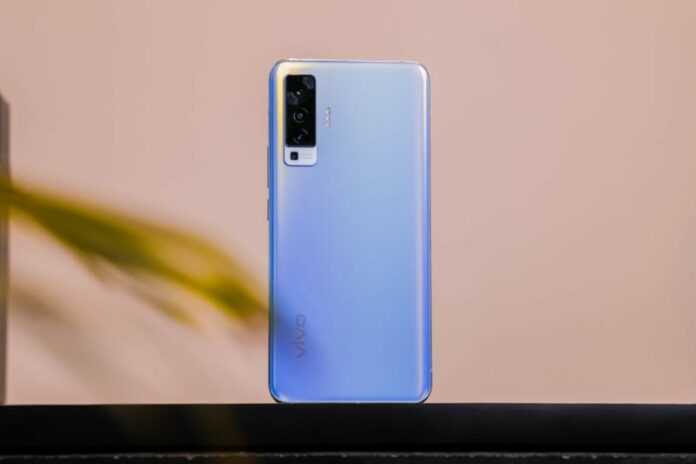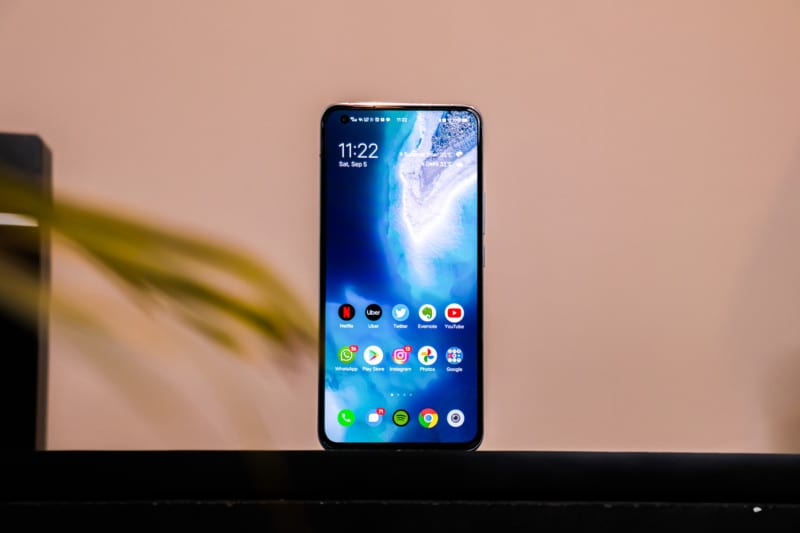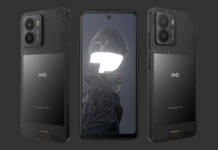Vivo as a smartphone maker is known for its devices ranging from the budget segment to the industry-first Apex (NEX) series of devices. From under 10K to above 50K, the smartphone maker offers a choice for all. And with the launch of two new devices in its X series of smartphones, Vivo has provided solid options in the premium segment. Both the X50 and X50 Pro smartphones offer segment-leading features like Gimbal camera system, high refresh-rate screens and a very premium design.
While the Vivo X50 Pro delivers a premium flagship-like experience; Vivo X50 also offers great value for money by not cutting down on the vital features in this price segment. After extensively using it as our primary driver for more than three weeks, this is our review of the Vivo X50 smartphone.
Before we start the review, let’s have a look at the specs:
| Brand | Vivo |
| Model | X50 |
| Release date | 2nd June 2020 |
| Launched in India | Yes |
| Dimensions (mm) | 159.54 x 75.39 x 7.49 |
| Weight (g) | 173.00 |
| Battery capacity (mAh) | 4200 |
| Fast charging | Proprietary |
| Colours | Frost Blue, Glaze Black |
| Screen size (inches) | 6.56 |
| Touchscreen | Yes |
| Resolution | 1080×2376 pixels |
| Aspect ratio | 19.8:9 |
| Pixels per inch (PPI) | 398 |
| Processor | octa-core |
| Processor make | Qualcomm Snapdragon 730 |
| RAM | 8GB |
| Internal storage | 128GB |
| Expandable storage | No |
| Rear camera | 48-megapixel (f/1.6) + 13-megapixel (f/2.48) + 8-megapixel (f/2.2) + 5-megapixel (f/2.48) |
| Front camera | 32-megapixel (f/2.48) |
| Operating system | Android 10 |
| Skin | FunTouch OS 10.5 |
| Wi-Fi | Yes |
| Wi-Fi standards supported | 802.11 a/b/g/n/ac |
| GPS | Yes |
| Bluetooth | Yes, v 5.10 |
| USB Type-C | Yes |
| Number of SIMs | 2 |
| Active 4G on both SIM cards | Yes |
| SIM 1 | |
| SIM Type | Nano-SIM |
| GSM/CDMA | GSM |
| 3G | Yes |
| 4G/ LTE | Yes |
| Supports 4G in India (Band 40) | Yes |
| SIM 2 | |
| SIM Type | Nano-SIM |
| GSM/CDMA | GSM |
| 3G | Yes |
| 4G/ LTE | Yes |
| Supports 4G in India (Band 40) | Yes |
| Face unlock | Yes |
| Fingerprint sensor | Yes |
| In-Display Fingerprint Sensor | Yes |
| Compass/ Magnetometer | Yes |
| Proximity sensor | Yes |
| Accelerometer | Yes |
| Ambient light sensor | Yes |
| Gyroscope | Yes |
IN THE BOX
- Vivo X50 handset
- Vivo FlashCharge Charger
- Type-C Cable
- Protective Case
- SIM Ejector Tool
- User Manual and Warranty
DESIGN & DISPLAY
- 6.56-inch FHD+ AMOLED Display
- 90Hz Refresh Rate
- 7.49mm thin and weighs only 171.5g
- 1300 nits of peak brightness
The Vivo X50 is a head-turner with its elegant design. It tops off glass and metal build along with an aluminium frame. The good thing is that the frame is flattened from the top and bottom. With a thickness of just 7.49mm, it’s a charm to hold in hands. In this world full of bulky devices, my wrists honestly acknowledged the weight (i.e, 171.5g) of this device.
The frosted glass on the rear with subtle curves in the ends retains a slim dimension which can be clutched with ease. The glass itself comes with a matte texture which hardly reflects smudges and fingerprints. The rear looks striking and shifts colour while examining it through another angle respectively. There is a camera bump presence in it that combines with the footprints of the phone. The camera module houses an array of four camera sensors along with a LED flash.
Moving on to the sides, the right side boasts a power button and volume rockers which feel tactile and offer satisfactory feedback whereas the left side is bare. On the bottom, there’s a USB-C port next to the speaker grille. The speaker on this one is a mono speaker, still, it manages to provide a nifty sound experience. Sadly, there is no headphone jack so you either go wireless or get a USB-C to 3.5mm adaptor for yourself. It also has a SIM tray that supports 2 SIM cards in it along with the secondary microphone at the top. This smartphone lacks external memory; so, buying its higher storage variant will be a wiser decision if you store a lot of media on your device.
The 6.56-inch FHD+ AMOLED Display with 2.5D glass keeps slim bezels around every side and a punch-hole camera on the upper left for the front-facing camera. The 90hz refresh rate ensures that the experience while navigating in the UI is polished. It also offers a smart switch utility that smartly switches between 60hz and 90hz depending on the usage scenario. The HDR10+ capable display is excellent to look on, be it Netflix or Amazon Prime; all thanks to its immersive display. The display is luminous and vibrant with great sunlight readability which offers a peak brightness up to 1300 nits.
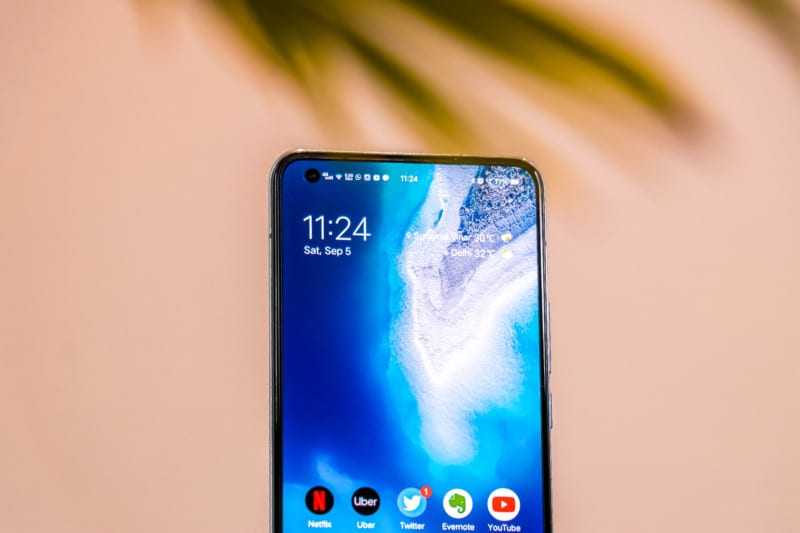
It also gets Widevine L1 certification which is eligible to stream HD videos on Netflix and other OTT platforms. There is also an in-display fingerprint scanner which is quick and the same is the case with the face unlock. Overall, the device looks and feels premium, has a great display along with excellent weight distribution.
PERFORMANCE
- Snapdragon 730
- 8GB RAM and 128GB ROM
- Adreno 618 GPU
The Vivo X50 is powered by Snapdragon 730 SOC with Adreno 618 GPU. Meanwhile, I had no issues at all with this mid-range chipset. While admitting the fact that this is not the most influential SOC for a smartphone, especially when you’ve competitors with Snapdragon 765G and 855+ to have a battle with. However, it’s a well-performing chipset, if you exhaust a lot of time in Gaming, the performance is lost for those users in this device.

Uttering about real-world usage, it reflects no hiccups at all. The interface is snappy; all thanks to those higher refresh rates and multitasking works like a charm. The Funtouch OS tends to make the RAM management to be good, which doesn’t come with the behaviour of killing apps in the background.
The company did a great job in terms of optimization in this device. It can handle any game you throw at it with minimal heating even playing games like PUBG (which is banned now) and Call Of Duty. If you tend to use your device for a longer period, future-proofing can be an interest for you. To chalk it up, The Snapdragon 730 is an adequate mid-range performer that would be satisfactory for most of the consumers.
CAMERA
- 48MP f/1.6 + 13MP f/2.46 + 8MP f/2.2 + 5MP f/2.48 Rear Camera
- Super Night Mode, Pro Sports Mode, Portrait (Art Portrait, AI Makeup, Filters)
- 32MP f/2.45 Selfie Camera
There’s a lot of buzz going on about the cameras of the Vivo X series of smartphones. The buzz is real and for a reason. Vivo’s X-series smartphones are redefining smartphone photography and videography. Even though the X50 doesn’t have the gimbal stabilization or a telephoto lens of the Vivo X50 Pro, still, it houses a great quad-camera setup. There is a primary 48MP Sony IMX598 camera sensor with f/1.6 aperture size which supports Optical Image Stabilisation. Along with that, it sports 3-more lenses i.e, an 8MP Ultrawide Angle Lens with f/2.2 aperture,13MP Portrait Lens with f/2.48 aperture, and a 5MP 1.5cm Super Macro Lens with f/2.48 aperture size respectively. It also offers a 2x optical zoom and up to 20X Digital Zoom.
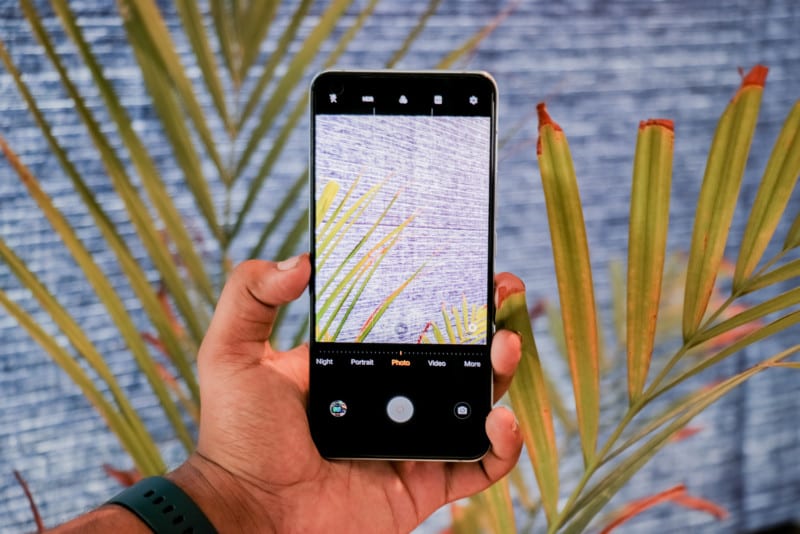
The Primary Camera has served well with its photos, The colours are punchy and well saturated. The sharpness and dynamic range are great even in low lighting scenarios. All thanks to the f/1.6 aperture size which manages to click some great low light photos. The ultra-wide-angle camera captures decent shots. Also, there is no derivation while switching between primary and ultra-wide lens. Portraits stand out excellent with great details and background bokeh. Before and after taking a shot, you can adjust the level of background blur which is a great accumulation indeed.
Using AI scene recognition, colours seem to be boosted. If you want more natural appeal to the photos; its best to keep it off. The macro camera captures quality macros with comparatively lesser details with poor colour reproduction. The fixed macro mode helps to focus on a particular object at a 1.5cm close range which leads to poor image quality. The wide-angle camera shoots weaker details in low light scenarios if compared to the primary camera due to different aperture sizes.
In low light scenarios, the primary camera decreases and increases the shutter speed for better exposure which looks grainy and looks overexposed but Switching to night mode fixes the issue. The X50 even has 4-night filters which were also present in X50 Pro.
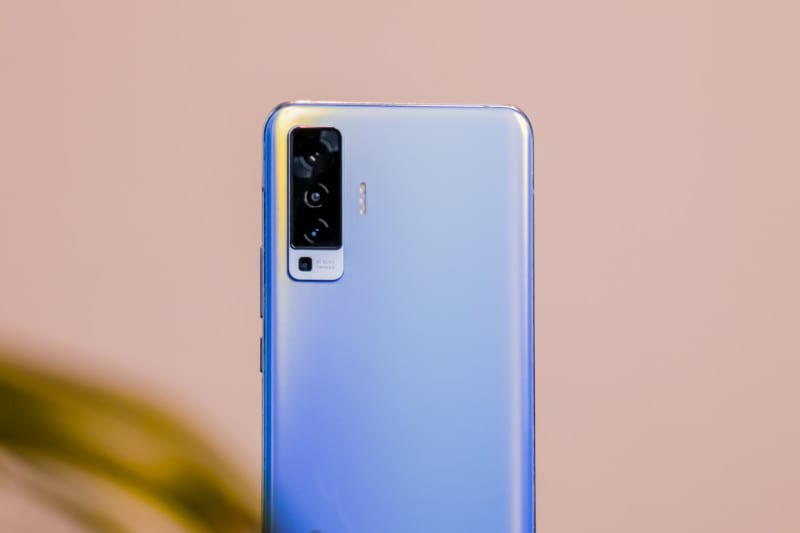
The front shooter boasts a 32 MP camera that captures high-quality selfies in daylight scenarios. Low light photos taken under artificial light look decent but the quality difference is major. The results in Night Mode are not satisfactory at all but it gets the job done with grains and a whitish tone in the picture.
It can record up to 4K 30fps Stabilised Footage. The reproduction of colours was optimal with minimal noise. The ultra-wide-angle lens can shoot up to 1080p. Our suggestion will be to avoid using the Ultra-wide camera because its quality is not up to the mark as the primary one has. The ‘Ultra Stable’ Mode is a combination of both OIS and EIS which offers a great stabilization even if you’re on a move. In low light scenarios, it’s better to stick at a Primary camera for better results. It also comes with some nifty features such as Smart Zoom, Object tracking, 3D soundtracking.
BATTERY
The Vivo X50 packs in a 4200mAh battery which comes with a 33 Watt Fast Charging. It can juice the phone from 0% to 100% in about 70 minutes.
In our usage, the refresh rates were set on 90hz only and the SOT was 8 hours or so; which includes watching videos on Youtube, surfing, and chatting through various social media apps with moderate camera usage.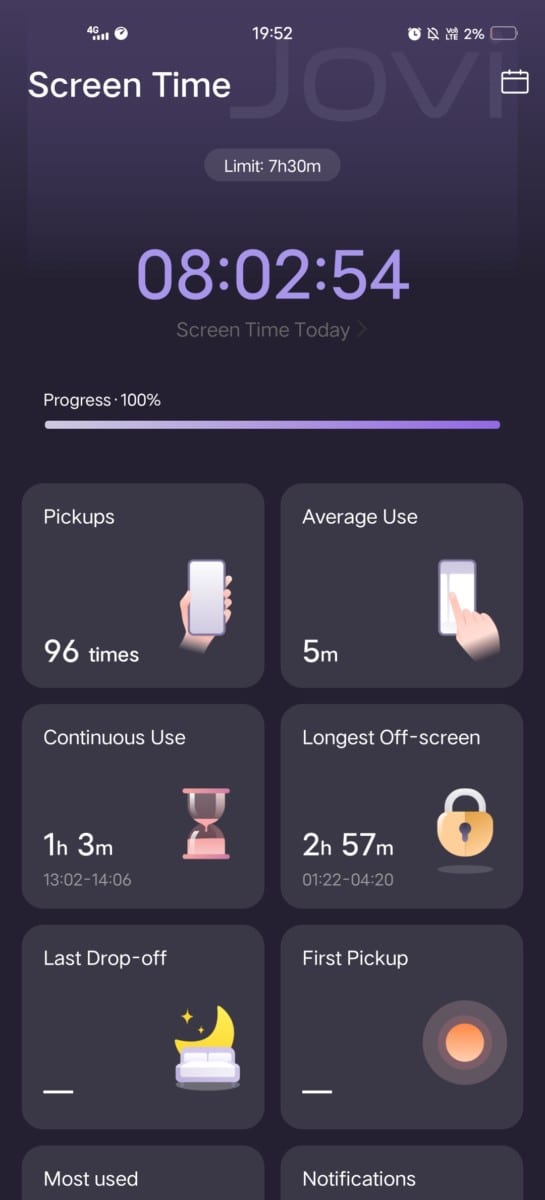
Reducing the refresh rates back to 60hz, it offers one extra hour of battery usage. This can long last you a day with its battery backup on moderate usage.
SOFTWARE
- Funtouch OS 10.5 (Based on Android 10)
It ships with Funtouch OS 10.5 custom UI based on Android 10 out of the box. It’s admirable to witness Vivo is taking consumer feedback seriously and improving FunTouch OS with each update. Like most UI overlays, it boils down to user preferences. Some people prefer a stock android experience whilst some like custom features and nuances.
Vivo has done a great job in adding some nifty features to it like shuffling through various themes and icons, Always-on-display with the customization, and many more. I found it weird that for accessing most of the themes and fonts you have to pay an amount for that particular theme to actually use it.
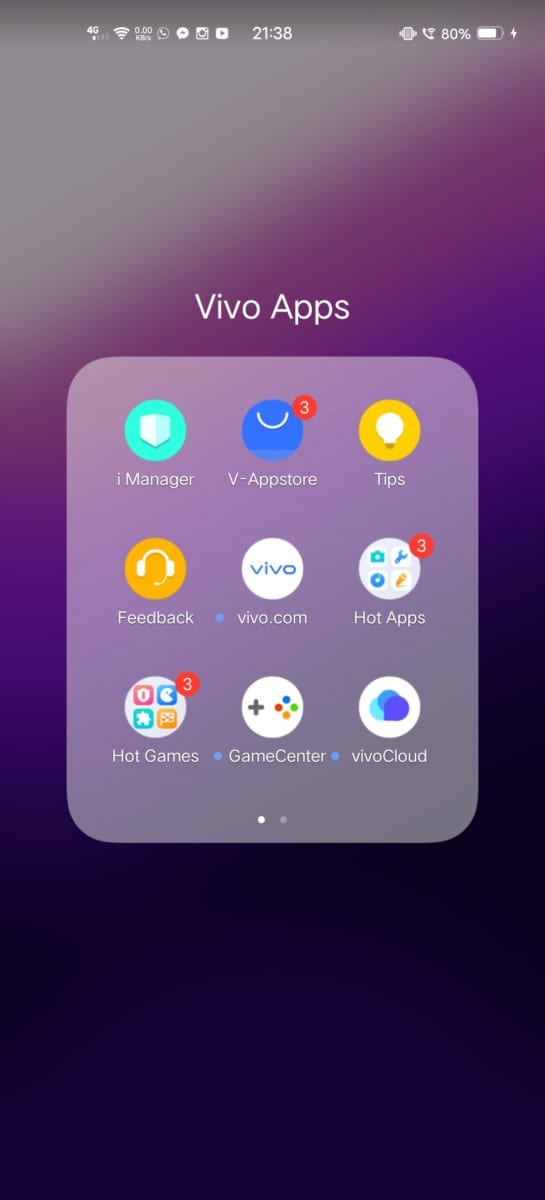
Whereas in MIUI, there are a lot of free themes and fonts available in the theme store to use. However, the amount of bloatware present; not at all of it can be uninstalled. The pull-down gesture annoyed me as it provoked the Vivo Global search.
VIVO X50 – THE UNBIASED VERDICT
The Vivo X50 comes in two colours: Glaze Black and Frost Blue and two variants – Rs.34,990 for 8GB RAM + 128GB ROM and Rs.37,990 for 8GB RAM + 256 ROM.
We recommend the Vivo X50 for anyone who needs a good set of cameras, sleek and stylish design with a strong battery, and an AMOLED display. However, according to its price segment, it’s slightly underpowered by some of its competitors such as the Realme X2 Pro and OnePlus 7T which both offer a flagship SOC. The day-to-day performance shouldn’t be obstructed with SD730. Also if you love stereo speakers then you would miss the stereo sound experience.

Disclaimer: We tested the Vivo X50 smartphone (8GB/128GB) as our primary device on Jio 4G VoLTE network for about a month. All our reviews are unbiased and are published without the brand getting to read it before you guys. We don’t change our reviews on pressure from brands and that’s the reason we are not sent review units from companies like Samsung, OnePlus and a few more.
